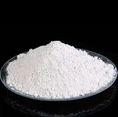P-Phenylenediamine, often abbreviated as PPD, is a chemical compound that's been around for quite a while and has a wide range of uses. As a P-Phenylenediamine supplier, I've seen firsthand how versatile this stuff can be. So, let's dive into the common uses of P-Phenylenediamine.
Hair Dye Industry
One of the most well - known uses of P - Phenylenediamine is in the hair dye industry. It's a key ingredient in permanent hair dyes. When you want to change your hair color and keep it that way for a long time, chances are the hair dye you're using contains PPD.
The reason PPD is so popular in hair dyes is its ability to react with other chemicals in the dye formulation. It forms a complex that can penetrate the hair shaft. Once inside, it undergoes a series of chemical reactions to create a stable color. This color is resistant to washing and fading, which is exactly what people look for in a permanent hair dye.
However, it's important to note that PPD can cause allergic reactions in some people. That's why hair dye manufacturers usually include a patch - test instruction on their products. Before applying the dye all over your head, you're supposed to test it on a small area of your skin to see if you have any adverse reactions.
Rubber Industry
In the rubber industry, P - Phenylenediamine plays a crucial role as an antioxidant and antiozonant. Rubber products, especially those exposed to the elements, are prone to degradation. Oxygen and ozone in the air can cause the rubber to harden, crack, and lose its elasticity over time.
PPD helps prevent these issues. It works by reacting with the free radicals that are produced during the oxidation process. By doing so, it stops the chain reactions that lead to rubber degradation. This means that rubber products like tires, hoses, and seals last longer and perform better. For example, tires with PPD in their formulation can withstand more wear and tear on the road, and hoses are less likely to burst due to aging.
Pharmaceutical Intermediates
P - Phenylenediamine is also used as a building block in the synthesis of various pharmaceutical compounds. It can be modified and combined with other chemicals to create drugs with different therapeutic effects.


For instance, it can be used in the synthesis of some anti - cancer drugs. Scientists can manipulate the chemical structure of PPD to develop compounds that target cancer cells specifically. Additionally, it's involved in the production of some anti - inflammatory drugs. The ability of PPD to be chemically modified makes it a valuable starting material in pharmaceutical research and development.
If you're interested in related pharmaceutical intermediates, you can check out Alpha-(2,4 - dichlorophenyl) Supplier and Fungicide Chemical Synthesis. These links provide more information on other important chemical compounds in the pharmaceutical field.
Dye and Pigment Manufacturing
Apart from hair dyes, P - Phenylenediamine is used in the production of other dyes and pigments. It can be used to create a variety of colors, from bright reds to deep blues. These dyes and pigments are used in industries such as textiles, printing, and plastics.
In the textile industry, dyes made from PPD can provide long - lasting and vibrant colors to fabrics. They can be used to dye natural fibers like cotton and silk, as well as synthetic fibers like polyester. In the printing industry, PPD - based pigments are used in inks to ensure high - quality and durable prints. And in the plastics industry, they can be used to color plastic products, making them more visually appealing.
Photography
In the past, P - Phenylenediamine was widely used in black - and - white photography. It was an important developing agent. When exposed to light, the silver halide crystals in photographic film or paper are changed. The developer, which contains PPD, reduces the exposed silver halide crystals to metallic silver, creating the image.
Although digital photography has become more popular in recent years, there are still some photographers who prefer the traditional film - based photography. For them, PPD - based developers can still provide high - quality results with good contrast and sharpness.
Comparison with M - Phenylenediamine
It's worth mentioning the difference between P - Phenylenediamine and M - Phenylenediamine. While they are both phenylenediamine isomers, they have different chemical properties and uses.
M - Phenylenediamine is often used in the production of epoxy resin curing agents and some specialty dyes. Its chemical structure allows it to react differently compared to P - Phenylenediamine. For example, in the dye industry, M - Phenylenediamine can produce different color shades and has different dyeing characteristics.
Conclusion
As you can see, P - Phenylenediamine is a very useful chemical compound with a wide range of applications. From hair dyes to rubber products, pharmaceuticals to photography, it plays an important role in many industries.
If you're in need of P - Phenylenediamine for your business, whether it's for hair dye manufacturing, rubber production, or any other application, I'm here to help. I'm a reliable P - Phenylenediamine supplier, and I can provide you with high - quality products at competitive prices. Don't hesitate to reach out to me for more information or to start a purchase negotiation. Let's work together to meet your chemical needs.
References
- "Industrial Organic Chemistry" by Klaus Weissermel and Hans - Jürgen Arpe
- "The Chemistry of Hair Care Products" by Cheryl D. Driscoll
- "Rubber Technology: Compounding, Testing, and Applications" by Werner Hofmann




